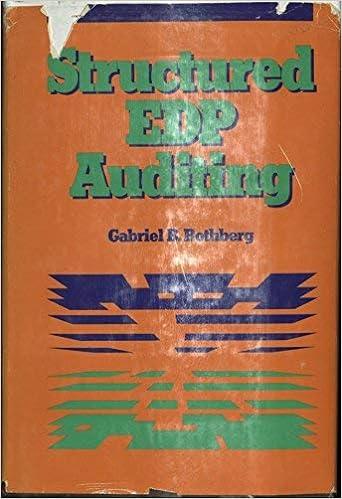Answered step by step
Verified Expert Solution
Question
1 Approved Answer
Transco, Inc., was the largest company in the state specializing in rebuilding automobile transmissions. Every transmission rebuilt by the business was covered by a nine-month
Transco, Inc., was the largest company in the state specializing in rebuilding automobile transmissions. Every transmission rebuilt by the business was covered by a nine-month warranty. The owner, Don Adams, was meeting with his accountant to go over the yearly financial statements. While reviewing the balance sheet, Don became puzzled by the large amount of current liabilities reported, so he asked his accountant to explain it. The accountant said that most of the current liabilities were the result of accruals, such as the estimated warranty payable, some additional wages payable, and interest accrued on the note owed to the bank. The employees were not actually paid until the first week of the new year, so some of their wages had to be recorded and properly matched against revenues in the current period. Also, several months of interest expense had to be accrued on a bank loan. However, the largest amount of the accrued liabilities was due to the estimated warranty expense. Don asked whether the wages payable and the interest payable could be removed because they would be paid off shortly after the year ended. The accountant stated that accrued liabilities had to be properly recognized in the current accounting period, and thus they could not be removed. Don agreed but then asked about the large accrued liability based on the estimated warranty amounts. Again, the accountant stated that in previous years the actual warranty cost had been about 4 percent of the total sales and therefore, in the current year, the estimate was accrued at 4 percent. Don then informed the accountant that a new conditioning lubricant had been added to each transmission rebuilt, which dramatically reduced the amount of rebuilt transmissions being returned under warranty. As a result, Don strongly felt that the warranty estimate should be reduced to only 3 percent of total sales and the accrued warranty liability and related expense would thereby also be reduced. The accountant argued that the only reason Don wanted to reduce the estimated percentage was to improve the financial statements, which would be unethical and inappropriate. What is the impact of accrued liabilities on the financial statements? Should the accrued liabilities for wages and interest payable be removed from the balance sheet? Does Don have a valid reason for wanting to reduce the estimated warranty liability? Are the accountants concerns valid?
Step by Step Solution
There are 3 Steps involved in it
Step: 1

Get Instant Access to Expert-Tailored Solutions
See step-by-step solutions with expert insights and AI powered tools for academic success
Step: 2

Step: 3

Ace Your Homework with AI
Get the answers you need in no time with our AI-driven, step-by-step assistance
Get Started


